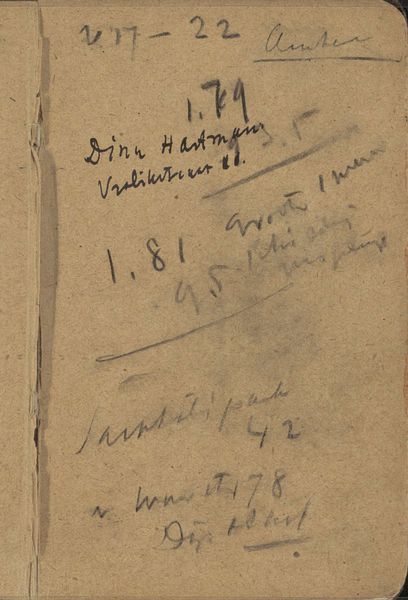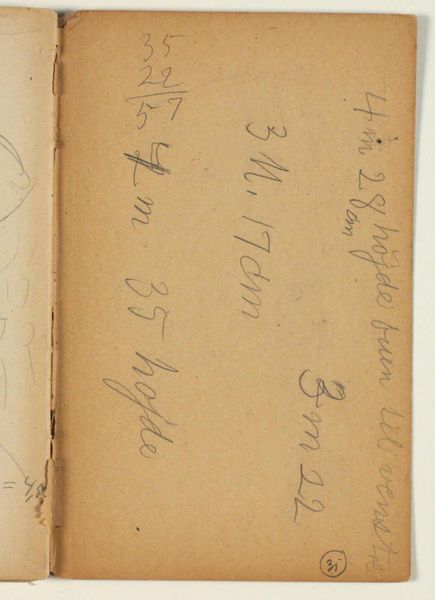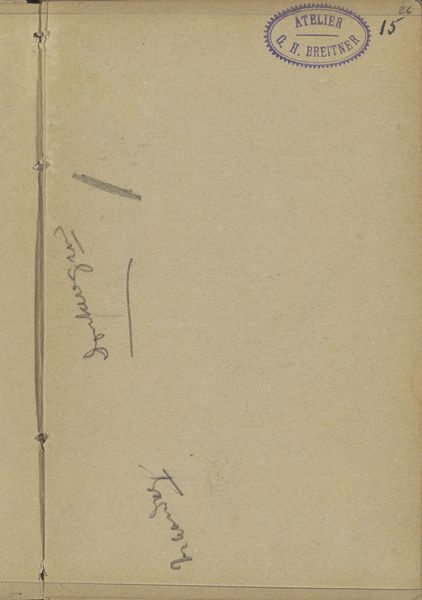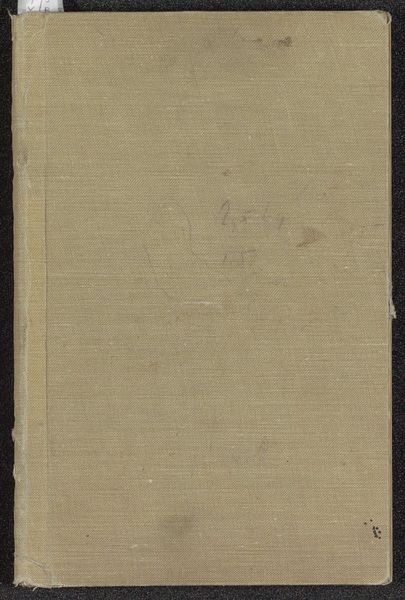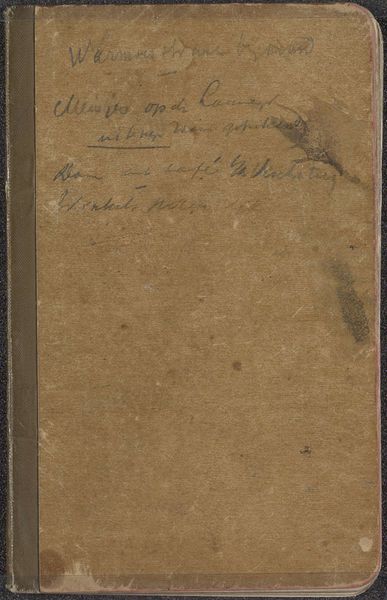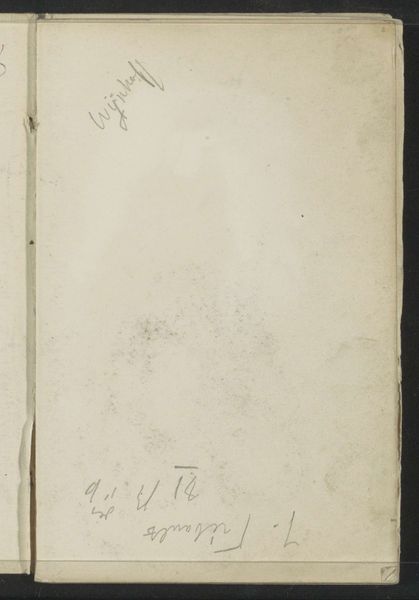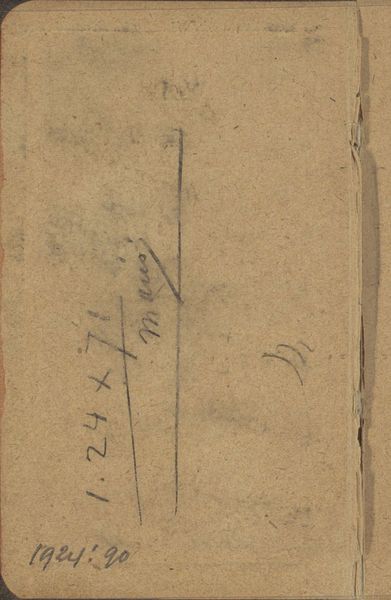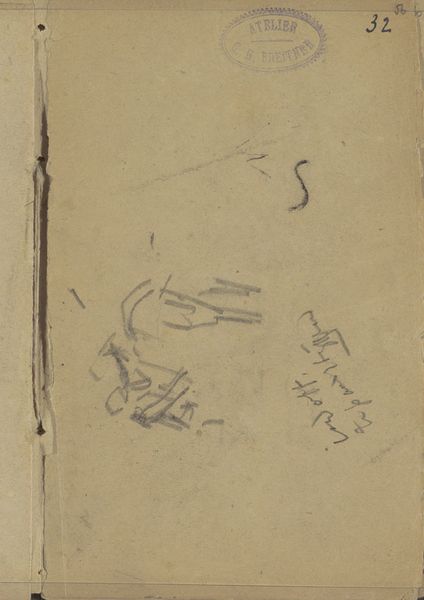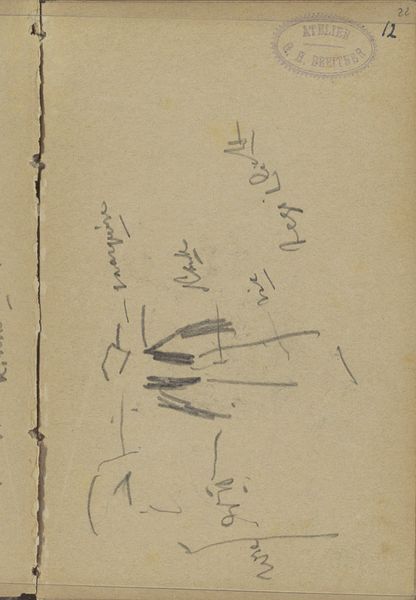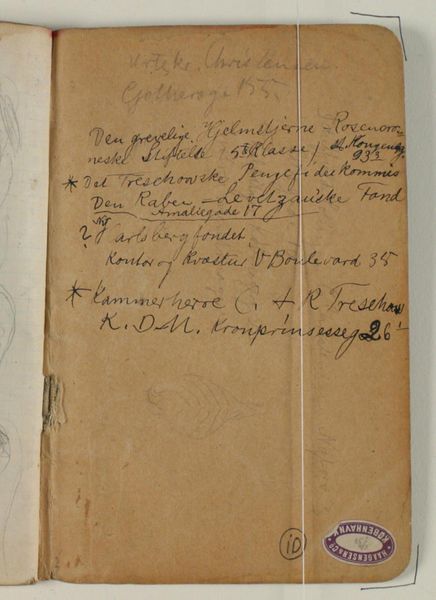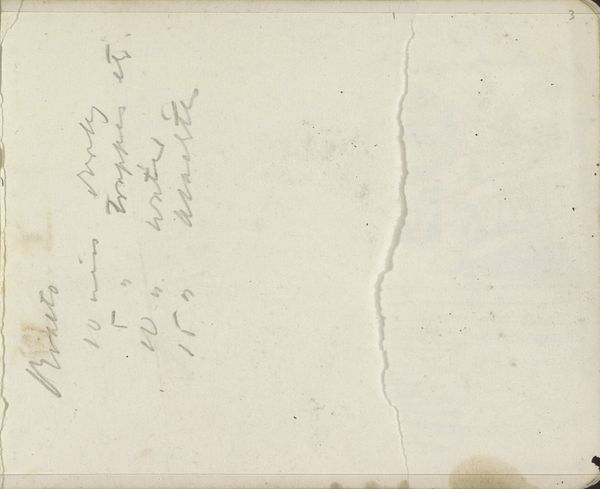
Copyright: Rijks Museum: Open Domain
Curator: Here we have “Annotaties,” a drawing rendered circa 1896 by George Hendrik Breitner. It's created with pencil and colored pencil on paper. What's your initial take on it? Editor: It’s intriguing how such an ordinary-looking notebook page can evoke a feeling of intimacy, almost voyeuristic. The scribbled annotations and calculations have a certain graphic quality. I wonder about the person who held this in their hands and penned these marks. Curator: Breitner was a key figure in the Amsterdam Impressionist movement, documenting city life. Looking through that lens, the jottings can be seen as a material artifact documenting the thoughts of someone existing within this broader urban milieu. His work often focused on the lives of ordinary people, which is evident in his choice to preserve a page like this, usually unseen, now public. Editor: You're right, seeing it this way changes the experience. It becomes less about the aesthetic value, and more about the clues that are buried within. Numbers are used to define material objects—size, dimension, number. Then “schets,” what appear to be measurements. And isn't the "Q" some archaic symbol? What can you make of these details, signs, and notations? Curator: Precisely! This image encourages us to question the power dynamics at play in how the unseen, functional items used to perform art are treated. This speaks to the tradition of archiving not only artistic creation, but a shadow realm of background documents. Editor: I'm still drawn to the way it uses mundane symbols. I suppose the modernists, after all, found their raw material everywhere and in everything, without restraint. It does trigger in the contemporary viewer this quest to interpret the cryptic codes and perhaps uncover a hidden message, even if it's an illusion. Curator: I find your reading especially convincing because the sketch indeed holds secrets, doesn't it? By choosing to display this, Breitner subverts what it means to call something art. And for viewers in the here and now, we must consider the conditions that permitted an unrefined work to gain entry into the canon of revered artifacts. Editor: It reminds us that the beauty of ordinary things exists not because they belong to high society, but because we imbue them with the weight of a story, the significance of something lost and now found again. Curator: Indeed, an act of cultural resurrection.
Comments
No comments
Be the first to comment and join the conversation on the ultimate creative platform.
